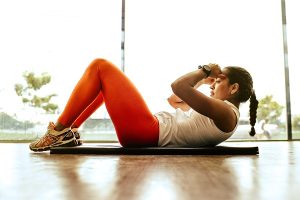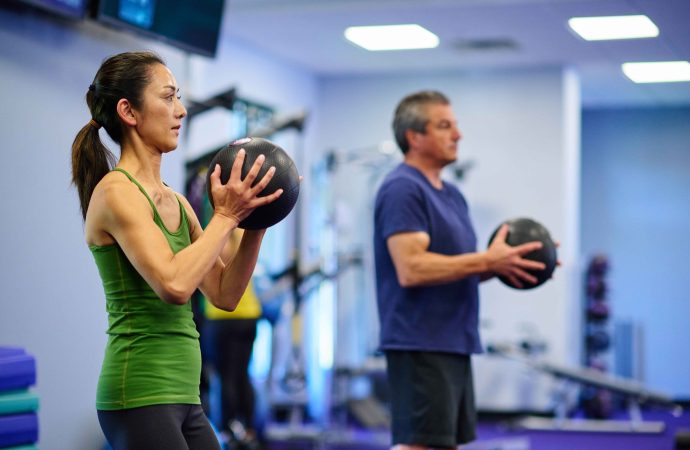1. Introduction: The Importance of Physical Fitness Introduce the article by highlighting the significance of physical fitness for overall health and well-being. Tips for Beginners in Physical Fitness Discuss the benefits of regular exercise, including improved cardiovascular health, enhanced mood, increased energy levels, and reduced risk of chronic diseases. 2. Assessing Your Current Fitness Level
1. Introduction: The Importance of Physical Fitness
Introduce the article by highlighting the significance of physical fitness for overall health and well-being. Tips for Beginners in Physical Fitness Discuss the benefits of regular exercise, including improved cardiovascular health, enhanced mood, increased energy levels, and reduced risk of chronic diseases.
2. Assessing Your Current Fitness Level
Discuss the importance of assessing your current fitness level before starting a new exercise program. Explore simple fitness tests and assessments to gauge your strength, flexibility, endurance, and cardiovascular fitness, helping you set realistic goals and track progress.
3. Setting SMART Fitness Goals

Image by: https://skinny ms. com
Introduce the concept of SMART (Specific, Measurable, Achievable, Relevant, Time-bound) goals for fitness. Discuss how to set realistic and achievable goals tailored to your individual needs, preferences, and fitness level, providing motivation and direction for your fitness journey.
4. Choosing the Right Type of Exercise
Explore different types of exercise and physical activities suitable for beginners. Discuss the benefits of cardiovascular exercises (e.g., walking, jogging, cycling), strength training (e.g., body weight exercises, resistance bands), flexibility exercises (e.g., yoga, stretching), and balance training for overall fitness and well-rounded health.
5. Starting Slow and Gradually Increasing Intensity
Emphasize the importance of starting slow and gradually increasing the intensity of your workouts to prevent injury and build endurance. Discuss the principles of progression in exercise, including the frequency, duration, and intensity of workouts, to safely challenge your body and improve fitness over time.
6. Incorporating Variety and Enjoyment
Encourage variety and enjoyment in your fitness routine to keep it engaging and sustainable. Discuss the importance of trying different activities, exploring outdoor workouts, joining group classes, and incorporating recreational activities that you enjoy, making exercise a fun and rewarding experience.
7. Prioritizing Safety and Injury Prevention
Highlight the importance of safety and injury prevention in physical fitness. Discuss proper warm-up and cool-down techniques, correct form and posture during exercises, listening to your body’s signals, staying hydrated, and using appropriate equipment and footwear to reduce the risk of injury.
8. Overcoming Common Barriers and Excuses

Image by: https://www. queen university. ca
Address common barriers and excuses that may hinder your fitness journey. Discuss strategies for overcoming obstacles such as lack of time, motivation, or confidence, finding social support, creating a supportive environment, and reframing setbacks as learning opportunities.
9. Monitoring Progress and Celebrating Achievements
Discuss the importance of monitoring progress and celebrating achievements along the way. Explore methods for tracking your workouts, recording achievements, and reflecting on your progress to stay motivated and accountable, fostering a sense of accomplishment and pride in your efforts.
10. Seeking Professional Guidance and Support
Encourage seeking professional guidance and support from qualified fitness professionals, personal trainers, or healthcare providers when starting a new fitness routine. Discuss the benefits of personalized guidance, expert advice, and accountability in optimizing your fitness journey and achieving your goals safely and effectively.
Key Points Summary Table:
| Key Point | Description |
|---|---|
| Introduction | Introduce the importance of physical fitness. |
| Assessing Your Current Fitness Level | Discuss the importance of assessing fitness level. |
| Setting SMART Fitness Goals | Introduce SMART goals for fitness. |
| Choosing the Right Type of Exercise | Explore different types of exercise. |
| Starting Slow and Gradually Increasing Intensity | Emphasize the importance of gradual progression. |
| Incorporating Variety and Enjoyment | Discuss the importance of variety and enjoyment. |
| Prioritizing Safety and Injury Prevention | Highlight safety and injury prevention measures. |
| Overcoming Common Barriers and Excuses | Address common barriers and excuses. |
| Monitoring Progress and Celebrating Achievements | Discuss progress tracking and celebration. |
| Seeking Professional Guidance and Support | Encourage seeking professional guidance. |
By following these essential tips and strategies, beginners can confidently embark on their fitness journey, improve their health and well-being, and enjoy the many benefits of regular physical activity.
















